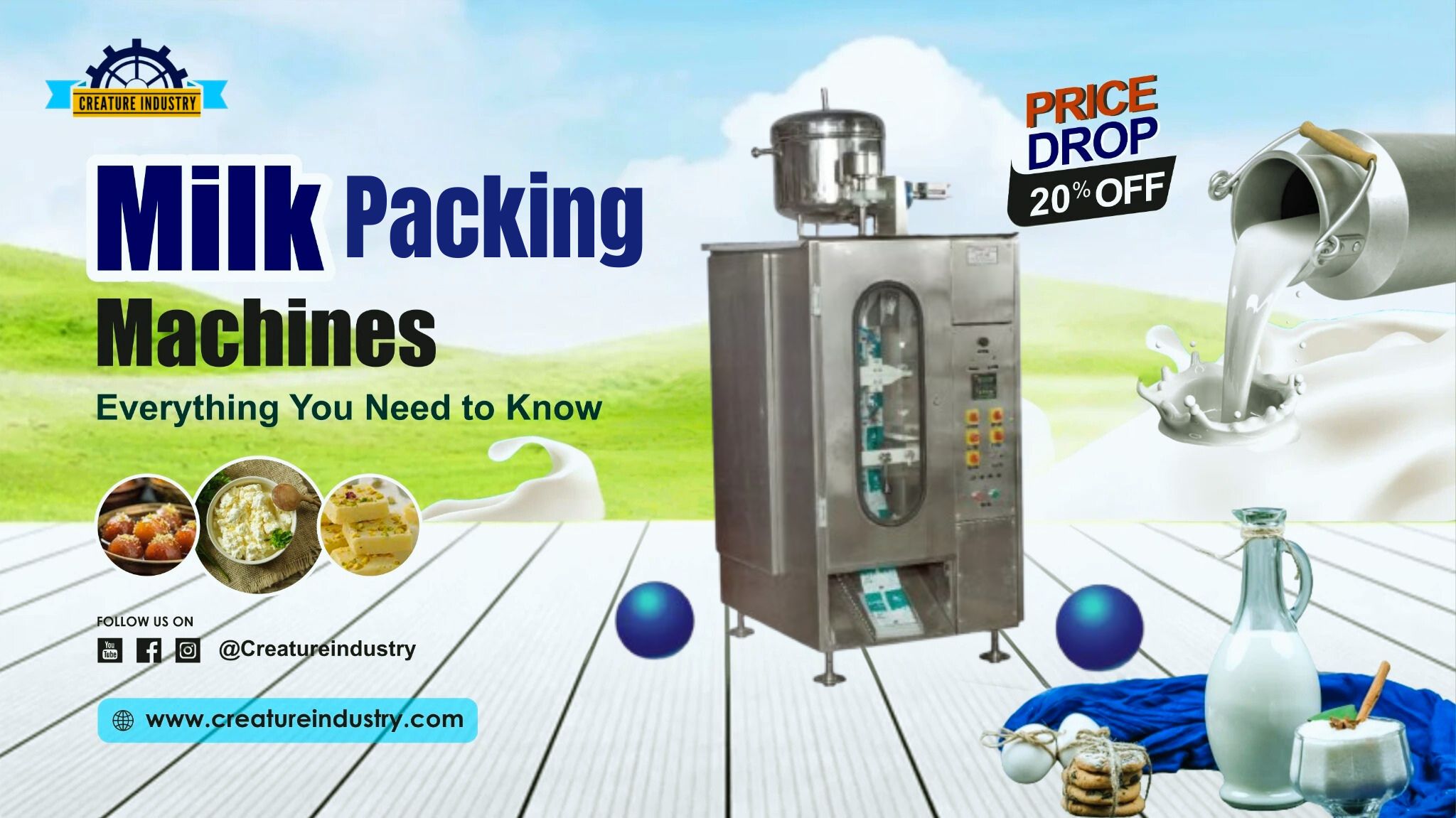
Milk is a staple food consumed worldwide, making efficient packaging a crucial aspect of the dairy industry. A milk packing machine ensures hygiene, speed, and accuracy in milk packaging, maintaining quality and extending shelf life. In this comprehensive guide, we explore everything you need to know about milk packing machines, their types, features, and benefits.
What is a Milk Packing Machine?
A milk packing machine is a specialized device used to automate the process of filling and sealing milk into pouches, bottles, or cartons. These machines ensure hygienic and airtight packaging, preventing contamination and prolonging the freshness of milk.
Types of Milk Packing Machines
1. Automatic Milk Packing Machine
These machines operate without manual intervention, ensuring high-speed, precise, and hygienic packaging. They include PLC-based controls, which allow for customization of filling volumes and sealing techniques.
2. Semi-Automatic Milk Packing Machine
This type of machine requires some level of manual operation, such as feeding packaging material or initiating the filling process. It is suitable for small-scale dairy businesses looking for cost-effective solutions.
3. Liquid Pouch Packing Machine
Commonly used for packaging milk, juice, and other liquid products, this machine is designed for high-speed pouch filling and sealing. It uses food-grade plastic film to ensure leak-proof and contamination-free packaging.
4. Bottle Filling Milk Packing Machine
For dairy companies preferring bottles over pouches, this machine efficiently fills and caps plastic or glass bottles. It maintains product consistency and prevents spillage.
5. Carton Packaging Machine
Milk cartons provide a sustainable and recyclable alternative to plastic packaging. This machine fills, seals, and labels cartons, making it an eco-friendly option for dairy producers.
Key Features of a Milk Packing Machine
- High-Speed Packaging: Ensures quick and efficient production to meet market demands.
- Hygienic Design: Made from stainless steel to prevent contamination and ensure food safety.
- Accurate Filling Mechanism: Uses digital sensors and PLC-based controls for precise volume measurement.
- Sealing Efficiency: Prevents leakage and maintains the freshness of milk.
- User-Friendly Operation: Equipped with touchscreen controls and easy-to-use interfaces.
- Energy Efficiency: Consumes minimal electricity, reducing operational costs.
- Customizable Options: Adjustable filling volumes, sealing mechanisms, and packaging material choices.
Benefits of Using a Milk Packing Machine
1. Improved Hygiene and Safety
Milk is highly perishable, and any contamination can lead to spoiled products. Milk packing machines eliminate human contact, ensuring hygienic and safe milk packaging.
2. Increased Production Efficiency
With automated operations, these machines reduce labor costs and significantly increase production speed, allowing dairy businesses to meet consumer demands effectively.
3. Extended Shelf Life
Proper sealing and air-tight packaging prevent exposure to air and bacteria, enhancing milk shelf life and reducing waste.
4. Cost-Effectiveness
Although an initial investment is required, automated milk packing machines reduce manual labor costs, material wastage, and product loss, leading to long-term savings.
5. Compliance with Industry Standards
Dairy packaging machines adhere to strict food safety and quality regulations, ensuring compliance with FDA and FSSAI guidelines.
How to Choose the Right Milk Packing Machine?
1. Consider Production Capacity
Evaluate the daily milk packaging requirement and choose a machine that meets your volume needs.
2. Determine Packaging Material
Decide between plastic pouches, bottles, or cartons, as different machines cater to specific packaging formats.
3. Automation Level
Fully automatic machines suit large-scale industries, while semi-automatic machines are better for small businesses.
4. Budget Constraints
Compare different models, considering initial costs, maintenance expenses, and long-term ROI.
5. Check for Additional Features
Look for customization options, ease of operation, and energy efficiency to maximize productivity.
Top Milk Packing Machine Manufacturers
Some leading manufacturers of milk packing machines include:
- Tetra Pak – Specializes in carton packaging solutions.
- Nichrome – Offers high-speed liquid packaging machines.
- Packo – Provides innovative and cost-effective dairy packaging solutions.
- Sealed Air – Focuses on food safety and packaging innovation.
- Tech-Long – Leading manufacturer of bottle-filling machines.
Maintenance and Troubleshooting Tips
Regular Cleaning and Sanitization
- Use food-grade cleaning agents to prevent milk residue buildup.
- Perform daily and weekly sanitation to maintain hygiene standards.
Lubrication of Moving Parts
- Regular lubrication ensures smooth machine operation and prevents wear and tear.
Routine Inspection
- Check for loose parts, leaks, or sensor malfunctions to prevent downtime.
Software Updates
- Keep the PLC system updated for enhanced efficiency and accuracy.
Conclusion
Investing in a milk packing machine is essential for dairy businesses looking to enhance productivity, maintain hygiene, and extend shelf life. Whether you run a small dairy farm or a large-scale production facility, choosing the right milk packaging machine will significantly impact your operations and profitability





Leave a Reply